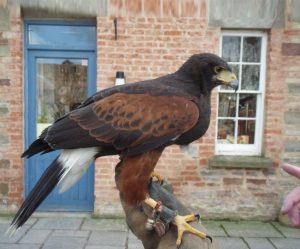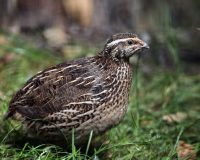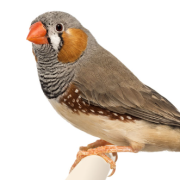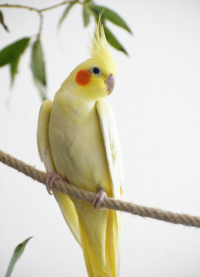Introduction
The cockatiel (Nymphicus hollandicus) is one of the most popular pet birds in the world, cherished for its charming personality, attractive crest, and friendly demeanor. Native to Australia, cockatiels are members of the cockatoo family and are the smallest of this group. They are known for their whistling abilities, playful antics, and affectionate nature, making them a favorite among bird enthusiasts and families alike.
Physical Appearance
Cockatiels are medium-sized parrots, typically measuring about 30-33 cm (12-13 inches) in length from beak to tail. Their most distinctive feature is the crest on top of their heads, which rises and falls depending on their mood. A relaxed, flattened crest indicates a calm bird, while an upright crest shows excitement or curiosity.
The wild-type cockatiel has a grey body, with a yellow face and bright orange cheek patches, but there are many color mutations available, including pied, lutino (yellow), albino, pearl, and cinnamon. These variations have made cockatiels even more popular as pets, with each bird displaying its own unique coloring and markings.
Behavior and Personality
Cockatiels are known for their friendly and social nature. They are naturally curious and enjoy interacting with their human caregivers. Unlike some larger parrots, cockatiels are generally easier to handle and less demanding, making them a great choice for both novice and experienced bird owners.
One of their endearing traits is their ability to mimic sounds and whistles. While they are not as gifted as some parrots in mimicking human speech, they can learn to whistle tunes and often imitate household noises like doorbells or telephones. Males are typically better at whistling and mimicking sounds than females.
Their vocalizations are pleasant and not as loud as those of larger parrots, making them suitable for apartment living. They often engage in soft chattering, and their whistling can be quite melodious.
Care Requirements
Cockatiels are relatively easy to care for compared to other parrots, but they still require attention and proper care to stay healthy and happy.
- Cage Size: Cockatiels need a spacious cage to stretch their wings and move around comfortably. A minimum of 24×24 inches is recommended for one bird, but the larger the cage, the better. Make sure the bar spacing is appropriate to prevent escape or injury (around 1/2 inch spacing is ideal).
- Diet: A balanced diet is essential for a cockatiel’s health. Their diet should consist of high-quality pellets, seeds, fresh fruits, and vegetables. Seeds should not be the main component of their diet, as this can lead to nutritional deficiencies. Vegetables like leafy greens, carrots, and sweet potatoes are great for them, as well as fruits like apples and berries in moderation.
- Social Interaction: Cockatiels are social birds and need regular interaction with their owners. They enjoy being handled, whistled to, and engaged with toys. Without enough socialization and mental stimulation, cockatiels can become bored or depressed, leading to undesirable behaviors like feather plucking.
- Exercise: Allowing your cockatiel time outside of the cage to fly or explore in a bird-safe environment is important for their physical and mental well-being. Daily out-of-cage time ensures they stay healthy and active.
- Toys and Enrichment: Cockatiels enjoy toys that they can chew, shred, and interact with. Toys made from natural materials like wood, paper, and leather are ideal. They also love mirrors, bells, and puzzle toys that challenge their intelligence.
- Grooming: Regular grooming is necessary for a cockatiel’s health. They enjoy bathing and should have access to water for bathing or be misted with a spray bottle. Their nails may also need to be trimmed if they don’t naturally wear down.
Lifespan and Health
Cockatiels have a relatively long lifespan, typically living between 15-20 years with proper care, and some can live even longer. To ensure a long and healthy life, regular vet check-ups are recommended, along with a varied and nutritious diet. Common health issues include respiratory infections, feather plucking (often due to stress or boredom), and nutritional deficiencies, so it’s important to be attentive to any changes in behavior or appearance.
Cockatiel Communication
Cockatiels use their crest and body language to communicate their mood. An upright, fully raised crest indicates curiosity or excitement, while a flattened crest can show that the bird is relaxed or, conversely, feeling defensive if paired with hissing. Fluffed-up feathers generally indicate contentment, but if combined with lethargy, it could be a sign of illness.
Breeding and Reproduction
Cockatiels are relatively easy to breed in captivity. They are cavity nesters, meaning they lay their eggs in enclosed spaces like tree hollows in the wild, or in nest boxes when kept in captivity. Females typically lay between 4-6 eggs, and both parents take turns incubating them for about 18-21 days until they hatch. Baby cockatiels, or chicks, are born with sparse down feathers and are dependent on their parents for food and warmth until they fledge (leave the nest) at around 4-5 weeks of age.
Conclusion
Cockatiels make excellent pets for people of all ages due to their friendly nature, manageable size, and relatively easy care requirements. Their playful personalities, coupled with their ability to form strong bonds with their owners, make them delightful companions. With proper care, a balanced diet, and plenty of social interaction, a cockatiel can bring years of joy and companionship to any household.









